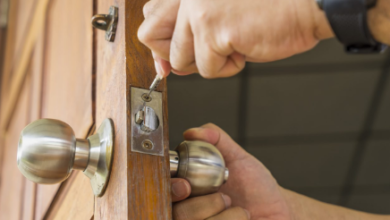Top Tips for Upgrading Your Home Heating with Smart Technology

As the seasons change and the temperature dips, maintaining a comfortable home environment becomes a priority. Traditional heating systems often lack precision and efficiency, leading to energy waste and fluctuating temperatures.
But fear not, there’s a smarter way to keep your home cozy and comfortable – smart home technology installation . By integrating smart features with your existing heating system, you can achieve optimal comfort, maximize energy efficiency, and gain greater control over your home’s climate.
Let’s get started!
Top Tips for Upgrading Your Home Heating with Smart Technology
Here are some top tips to guide you through this smart home upgrade and transform the way you manage your heating system.
- Understanding Your Heating System and Compatibility
The first step is to assess your current heating system. Identify the type of heating you have – forced air, radiant heat, or boiler systems – as compatibility with smart technology can vary.
Many smart home technology installation services offer consultations to evaluate your system and recommend suitable smart devices. For instance, a forced-air system might benefit from a smart thermostat, while a radiant heating system might require smart zone controls for individual room temperature adjustments.
- Functionality and Compatibility
The smart thermostat is the cornerstone of a smart heating system. These devices replace your traditional thermostat and offer a range of advanced features. Programmable scheduling allows you to set specific temperatures for different times of the day or even weekdays versus weekends.
Remote access capabilities let you adjust the temperature from your smartphone, ensuring a comfortable environment upon arriving home. Consider features like geofencing, which automatically adjusts the temperature based on your location, or smart learning algorithms that optimize heating patterns based on your preferences.
Remember to ensure compatibility between your chosen smart thermostat and your existing heating system.
- Exploring Smart Radiator Valves and Zone Control
For homes with radiator heating systems, smart radiator valves offer a powerful tool for maximizing efficiency. These valves attach to individual radiators and allow you to control the temperature in each room independently.
This eliminates the need to heat unused rooms, leading to significant energy savings. Similarly, consider smart zone control systems that divide your home into different heating zones. These systems allow you to create personalized temperature settings for each zone, ensuring maximum comfort without unnecessary heating in unoccupied areas.
- Connecting Your Smart Heating System to Your Smart Home Ecosystem
The beauty of smart home technology installation lies in its ability to create a unified ecosystem. Choose a smart thermostat and devices that integrate seamlessly with your existing smart home platform, such as Amazon Alexa or Google Home.
This allows you to control your heating system using voice commands or integrate it with other smart home features like motion sensors or smart lighting.
- Ensuring a Smooth Transition
While some smart home technology installation projects might be DIY-friendly, especially with readily available smart thermostats, consulting with a professional installer is highly recommended, particularly for complex systems or those involving multiple smart devices.




